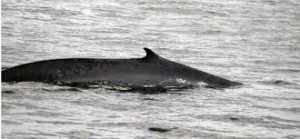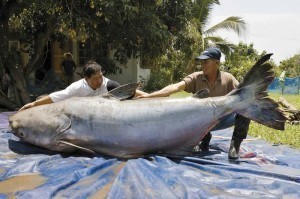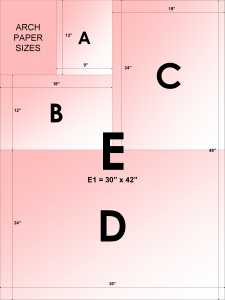Biggest Whale in the World
The biggest whale in the world weighed was a 177 metric ton (195 short ton) female. The longest accurately measured is one that reached 98 feet in length. There are also female whales said to be 33.6–33.3 meters (110–109 ft) long. The typical adult whale can exceed 33 meters (108 ft) in length and weigh 180 metric tons (200 short tons).
Measuring Whale Size
The whale’s size makes measurement difficult. Early estimates made by whalers were inaccurate. What they did was cut the animal into small pieces and measure it.
Due to loss of blood and fluids, the weight estimates were low. Some specimens have been recorded as 27 meters (89 ft) long and weighing 150–170 metric tons (170–190 short tons).
A 30 meter (98 ft) long whale studied by the American National Marine Mammal Laboratory (NMML) states it could have weighed over 180 metric tons (200 short tons). Again, it is difficult to determine the biggest whale in the world as early records were kept by whalers. Most were unskilled in taking proper measurements.
Facts and Figures
A blue whale’s fully expanded mouth can hold over 90 metric tons (99 short tons) of food. Its tongue alone weighs an estimated 2.7 metric tons (3.0 short tons). That being said, its throat does not allow it to swallow anything bigger than a beach ball.

A whale’s heart weighs 600 kilograms (1,300 lb), the biggest for any animal. The aorta has a diameter of 23 centimeters (9.1 in).
Baby Whale Calf
A newly born blue whale calf weighs 2,700 kilograms (6,000 lb). It is as heavy as an adult hippopotamus. The blue whale calf will consume 400 liters (100 U.S. gallons) of milk every day for the first seven months of its life. As a result, it will put on 90 kilograms (200 lb) daily.
Diet
Blue whales eat krill, but some consume copepods. It has been estimated that an adult blue whale eats 40 million krill daily. Up to 3,600 kilograms (7,900 lb) of krill can be eaten by one blue whale. This is equal to 1.5 million kilocalories. Feeding takes place at depths of 00 meters (330 ft) at daytime. Surface feeding happens only at night.
Comparing the biggest whale in the world with dinosaurs is difficult. Dinosaur remains are incompletes, so their sizes are only estimates and conjectures. Some suggest the Bruhathkayosaurus was bigger than the whale, but its remains are incomplete.





